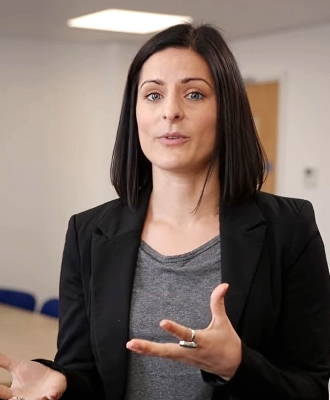Deep into the night with my headphones on, I randomly click into a video called ASMR, which could have been a food program as food is featured on the screen two-thirds of the time. The host does not utter a single word, but the pulling of the ring of the can is loud and clear. The bubbly Coke is poured into the glass and then gurgled down, with a sigh of “ahh..” to express his satisfaction.
He then picked up a piece of fried chicken and bit through its crispy skin before tearing apart the tender meat and sucking the succulent juice. All these sounds of ingesting food are of such a high def quality that will make you feel as if the food is inside your mouth, lingering repeatedly inside your head. Oh, how tasty… or rather…how melodious!
Other than a food program that may impart both visual and audio enjoyment, sounds like painting, banging the desk, uncapping a water bottle, flipping through the pages of a book, and soft whispers… will also trigger a sensory climax with their HD audio playback and the little finger gestures from the vloggers on the screen.

Unlike the goosebumps, such an indescribable sensation is a kind of tingle, a very pleasant and even therapeutic feeling called autonomous sensory meridian response (ASMR).
“Imagine the the Coke running down your body from your head, that kind of very fizzy and bubbly feel…,” said Dr Giulia Poerio, psychology lecturer at the University of Essex as she tried to verbalize the ASMR sensation, “Some kind of warm feeling. Actually it is very hard to describe that feeling.”
Could it be goosebumps? “No, even though it is somewhat similar. Goosebumps are piloerection where the hair on your skin stand up, but this won’t happen in ASMR.”
Dr Poerio cited an example: It’s like the numbness having maintained a sitting posture for too long. ASMR is this type of tingling sensation that begins on the scalp and moves down the body.
That makes ASMR really mystical. I myself have never had this response. Have you?
Poerio is an ASMR responder. Whenever someone scratched her hair, or used a finger to write a letter on her back, or when foot was measured for the new school shoes when she was young, the ASMR sensation would be generated. She told her sisters about this feeling but none of them could actually understand.
She found out what ASMR was all about and the fact that such sensation was also shared by many other people only after so many years. Nevertheless, few researches had been made on this phenomenon.
“When I explained ASMR to other people, those who had not experienced it would not believe, as they downright couldn’t understand.”
As a psychology scholar, Poerio decided that she should research on this thing through tests and experiments.
In 2014, she began her researches on ASMR, and is currently working with Dr Marc Archer of the Center for Mental Health and Wellbeing (CMHW), a collaboration between HELP University and Malaysian Mental Health Association.
CMHW is currently running online experiments on ASMR. Visit https://university.help.edu.my/cmhw-join/ for details.

What is ASMR?
The term ASMR or autonomous sensory meridian response was first coined in 2010. There wasn’t any term prior to that to describe such sensation. This term has since been used in scientific researches.
Such a tingling sensation normally starts from the scalp and spreads to the rest of the body, and is very relaxing and serene. Some have described its as a trance or hypnotic realm, but is a very positive, relaxing and euphoric kind of feeling.
Studies show that specific objects or behaviors could trigger ASMR, including whispering, soft speaking, personal attention, fiddling with the hair and light touches.
It needs to be stressed here that while there are plenty of YouTube videos on ASMR, such a sensation existed long before that. Many people have experienced ASMR, which typically happens from the age of 5 to 10, long before watching the videos. That said, such videos allow the viewers to have ASMR triggered through simulation scenes instead of experiencing it in real life situations.
Why was ASMR named only as late as 2010?
Studies show that some ASMR responders think they are the only people having such sensation and that it is very abnormal and unusual. So they never tell others about it. Meanwhile, other responders think everyone has experienced something similar and is very common.
Moreover, ASMR is a highly complicated emotional response. While we have adjectives like “happy” and “sad” to describe our emotions, such a complicated feeling is hard to describe. Because of this, we hadn’t had any word to describe it before that.
Does ASMR happen to everyone?
No, not everyone has it, not even after watching a relevant video or being subjected to a stimulant, and this is normal. Just like some people may be able to control their dreams but most people cannot. This doesn’t mean there is any problem with anyone.
Even though we may not experience ASMR or feel the tingling sensation watching an ASMR video, we can still enjoy some of the benefits, such as serenity and relaxation.
Will watching an ASMR video trigger the ASMR sensation?
An ASMR video creates and simulates specific sounds and actions in an attempt to trigger ASMR, but not every video can achieve this goal. We have seen plenty of negative effects especially with videos on food and intimate attention as they might instead make the viewers feel uncomfortable.
Specific sounds that may bring negative responses called misophonia, intense negative emotional reactions to sounds like chewing, whispering and clattering. It is obvious that many sounds that could trigger ASMR could also spark misophonia.
Such contrasting responses depend a lot on the situation. Under certain circumstances chewing sounds could trigger ASMR but under other circumstances, misophonia.
From the studies we have so far, individuals susceptible to AMSR are also susceptible to misophonia. They appear to be particularly sensitive to sensory stimulation. Their emotional responses could at times be positive but at other times negative depending on the situation and the nature of the sound.

Will ASMR responsiveness decrease with age?
We can’t tell at this moment and need long-term follow-up studies. It has been discussed that excessive exposure to ASMR could render a person acclimatized to it without any marked tingling sensation, as they will only feel relaxed. We think this could have something to do with a person’s resilience and habits. The same goes for many other things: you get used to it after some time.
Someone asked me why he didn’t have that tingling sensation any more. I suggested that he take a break and stop watching ASMR videos.
How to gauge a person’s ASMR response?
Initially we would explain ASMR to the subjects and let them watch the videos or music and ask them how they feel or anything that would trigger that feeling.
But nowadays we let the subjects watch plenty of ASMR videos and track their reactions. Not just emotionally but also tactile sensation, for example the tingling sensation at different parts of the body. We will then categorize them from the data collected into different groups: ASMR responders, non-ASMR responders and “false positive” responders (who think they experience ASMR but the feeling has not been generated on the scalp and therefore not qualifies as ASMR).
We also look at brain activities and physiological reactions. Past experiments show that the heartbeat of an ASMR responder slows remarkably while skin conductance increases.
We still have no idea why sounds like whispering and light clattering will trigger ASMR. We ares still studying the differences between their audio qualities and those of other sounds. This is somewhat complicated as it involves not just the sound but also the ambient atmosphere along with simultaneous visual and tactile impact.
Some believe ASMR may heal insomnia. Is it so?
To some extent, yes, because ASMR induces deep relaxation. Some people watch ASMR videos to help them sleep even though they are not real ASMR responders.
We need more researches on this, but so far we have observed that the heartbeat of ASMR responders slows and they feel relaxed while watching the videos.
Any particular instance that gives you a strong impression?
Besides auditory and tactile senses, there is another thing that triggers ASMR: watching someone doing something attentively, carefully or precisely. You don’t actually need a video, real-life situation can also trigger ASMR.
A subject once told me she had ASMR watching people put on make-up in a subway train, and felt so relaxed as if she was glued to the seat such that she missed her station.
We have also come across challenges in our experiments. Some of the subject are so relaxed that they felt asleep that we needed to redo the experiment.
ADVERTISEMENT
ADVERTISEMENT







































